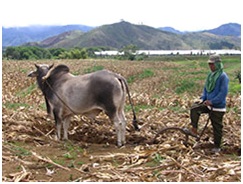Financial Situation in the Philippines
Financial Situation in the Philippines According to figures from the National Statistics Office of the Philippines, unemployment stands at 7.6%, and underemployment at 19.8% (July 2009 figures). These figures do not tell the full story. The definition of employment includes 10.5% of workers as ?unpaid family workers?, and many jobs provide a salary that is barely enough to survive on (National Statistics Office). The 2006 poverty incidence rate for the Philippines is 32.9% of the population (National Statistical Coordination Board).
The Philippines is falling behind its regional neighbors of Malaysia, Vietnam, Korea and Indonesia when it comes to economic growth. While the other nations are moving forward as Newly Industrialized Countries, the Philippines has a population growth approximately 2% per annum, meaning the number of poor could rapidly increase (CIA World Factbook).
Another problem is the unequal distribution of wealth in the Philippines. A small number of rich families living in the major cities control the majority of the wealth, while people in rural areas are getting poorer. In 2006, the richest 10% of families earned more than the poorest 70% of families combined (National Statistics Office, 2003 and 2006 Family Income and Expenditure Survey, Final Results). Even more telling is the fact that the ten richest families earned as much as the poorest nine million families, making up half the Filipino population.
Another major issue is urban migration, where many rural workers move to the cities looking for work, and end up living in squalid conditions with poor prospects for work. Yet this still seems more attractive than living in the rural areas, as the poorest rural regions are cruelly situated in the areas most susceptible to natural disasters such as typhoons, landslides and the effects of climate change. There is a drastic need to address the economic conditions in the Philippines, and assist the poorest of the poor. A concerted effort needs to be made to address the distribution of wealth, legislation issues hampering the poor, environmental conditions, population growth and poverty.

